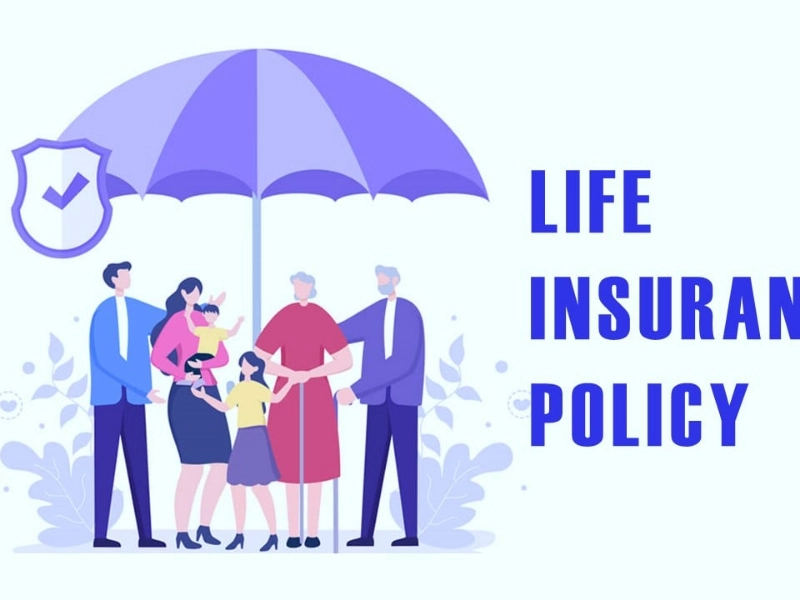Insurance's Future: Trends to Keep an Eye on in the Upcoming Years
Consumers will use more shared services and possess fewer tangible goods by 2030. Because of these common experiences, insurance that provides usage-based coverage is necessary. Insurance companies can prosper if they concentrate on their core competencies and make use of new technologies. Being tech-savvy, adept with data, and utilizing insights from cognitive learning are crucial for this.
1. AI, or artificial intelligence

2. Blockchain
 The COVID-19 pandemic has caused a significant shift in the expectations of insurance customers. Even though consumers still favor in-person interactions with agents for expert advice and last-minute service, there is a growing need for digital platforms that provide quick online quotes and simple online purchases of basic goods like auto insurance.
Insurance companies have numerous options to offer their clients novel experiences as a result of this shift in customer expectations. In order to provide these kinds of experiences, insurers must first strengthen their ecosystem business models and make investments in their digital capabilities. They will be able to offer on-demand services like real-time cargo insurance and hourly mobility insurance with the support of these investments. In a setting like this, insurance will merely be a small component of a bigger experience created by multiple parties.
The COVID-19 pandemic has caused a significant shift in the expectations of insurance customers. Even though consumers still favor in-person interactions with agents for expert advice and last-minute service, there is a growing need for digital platforms that provide quick online quotes and simple online purchases of basic goods like auto insurance.
Insurance companies have numerous options to offer their clients novel experiences as a result of this shift in customer expectations. In order to provide these kinds of experiences, insurers must first strengthen their ecosystem business models and make investments in their digital capabilities. They will be able to offer on-demand services like real-time cargo insurance and hourly mobility insurance with the support of these investments. In a setting like this, insurance will merely be a small component of a bigger experience created by multiple parties.
3. Large-scale data
 The insurance agency model is undergoing significant change due to a number of factors. First of all, tasks that were previously the purview of agents are increasingly being impacted by automation and artificial intelligence (AI), including chatbots and predictive analytics. These duties include rate quoting, application processing, risk assessment, and instructional resources.
These innovations can offer an unparalleled degree of personalization that can help insurers prevail in the battle for client loyalty when paired with data gathered from smart devices and the internet of things. However, to do this, one must adopt a mentality that sees disruptive technology as a chance rather than a danger to established business structures.
Those that do stand to gain from the development of ecosystems, wherein several providers collaborate to provide a holistic experience, Insurance companies will differentiate themselves from the competition if they can capitalize on these new digital ecosystems and the cognitive learning insights they produce.
The insurance agency model is undergoing significant change due to a number of factors. First of all, tasks that were previously the purview of agents are increasingly being impacted by automation and artificial intelligence (AI), including chatbots and predictive analytics. These duties include rate quoting, application processing, risk assessment, and instructional resources.
These innovations can offer an unparalleled degree of personalization that can help insurers prevail in the battle for client loyalty when paired with data gathered from smart devices and the internet of things. However, to do this, one must adopt a mentality that sees disruptive technology as a chance rather than a danger to established business structures.
Those that do stand to gain from the development of ecosystems, wherein several providers collaborate to provide a holistic experience, Insurance companies will differentiate themselves from the competition if they can capitalize on these new digital ecosystems and the cognitive learning insights they produce.
4. Movement
 A society in which people utilize more shared goods and services and own fewer possessions is what the year 2030 envisions. Insurers now have a great chance to change their business strategies and increase client value.
The goods and services they use become integrated with insurance coverage. Majesco estimates that this strategy might increase P&C revenue by $700 billion by the end of the decade.
Insurers can save expenses and increase the availability of products and services by implementing embedded insurance. Carriers can achieve this as long as they keep spending money on generative AI, external data ecosystems, and technology infrastructure in order to obtain meaningful insights more quickly. In order to reduce isolated contacts and promote individuals possessing the necessary skill sets to promote customer centricity, they simultaneously implement enterprise-wide cultural change.
A society in which people utilize more shared goods and services and own fewer possessions is what the year 2030 envisions. Insurers now have a great chance to change their business strategies and increase client value.
The goods and services they use become integrated with insurance coverage. Majesco estimates that this strategy might increase P&C revenue by $700 billion by the end of the decade.
Insurers can save expenses and increase the availability of products and services by implementing embedded insurance. Carriers can achieve this as long as they keep spending money on generative AI, external data ecosystems, and technology infrastructure in order to obtain meaningful insights more quickly. In order to reduce isolated contacts and promote individuals possessing the necessary skill sets to promote customer centricity, they simultaneously implement enterprise-wide cultural change.
5. Networked Devices
 Insurance in the future will be co-created, collaborative, immersive, integrated, and linked. The demand for insurers to change their organizational culture, distribution methods, goods and services, and technology infrastructure is being fueled by these converging factors.
Scott gets into his driverless vehicle in 2030 and drives across town for a meeting. His mobility insurer receives the destination from his digital personal assistant and modifies his monthly price accordingly.
In the future, quotes and policy issuance will happen automatically through AI interactions, eliminating the need for underwriting as we know it today. Rather than managing losses after they occur, policyholders can purchase coverage in advance, which adds value for both carriers and customers. The data from wearables, sensors, and telematics devices—all linked devices—is what powers this new efficiency. They also make it possible to save costs, make smarter decisions, and automate more processes.
Insurance in the future will be co-created, collaborative, immersive, integrated, and linked. The demand for insurers to change their organizational culture, distribution methods, goods and services, and technology infrastructure is being fueled by these converging factors.
Scott gets into his driverless vehicle in 2030 and drives across town for a meeting. His mobility insurer receives the destination from his digital personal assistant and modifies his monthly price accordingly.
In the future, quotes and policy issuance will happen automatically through AI interactions, eliminating the need for underwriting as we know it today. Rather than managing losses after they occur, policyholders can purchase coverage in advance, which adds value for both carriers and customers. The data from wearables, sensors, and telematics devices—all linked devices—is what powers this new efficiency. They also make it possible to save costs, make smarter decisions, and automate more processes.
